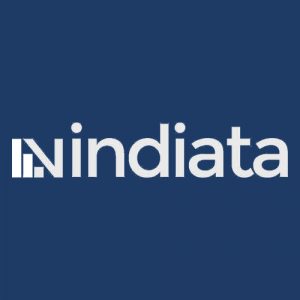Introduction
Modern businesses rely on multiple sources of data, which are derived from Mobile Applications, Website interactions, and API Providers or created by in-house teams for operational purposes. This data might not always be consolidated into a single database. Also, for fast-paced business functioning and real-time decision-making, data latency needs to be minimal. Thus, the data must be harvested in real-time at a singular source for efficient business operations and prompt decision-making. Here’s where a data loading tool or Data loader comes in handy. This blog acts as a comprehensive guide to data pipelines.
What are Data Loading tools? Why are they necessary?
As discussed in earlier Blog, Data loaders help in data ingestion from multiple sources into a singular data house, also known as a Data Warehouse. A data loading tool is also popularly called a data pipeline. You can read more about modern BI architecture here to see where a data loader is positioned. Although the process looks fairly simple, as it is just copying the data from one place to another and could be achieved by scheduling a script to run at a particular instance, there are several challenges to this process,
Performance optimization
Ensuring efficient data transfer speed and resource utilization during loading to minimize processing times, especially when dealing with large datasets.
Failure handling
Implementing robust error-handling mechanisms to detect and manage failures, preventing data inconsistencies, and ensuring the reliability of the data loading process.
Source systems interface
Establishing seamless connectivity and compatibility with diverse source systems, handling variations in data formats, structures, and interfaces.
Incremental loading.
Supporting the ability to identify and load only the changed or new data since the last load, optimizing efficiency and reducing unnecessary data transfer.
Data Validation
Implementing validation checks to ensure data accuracy, integrity, and conformity to predefined standards, preventing the ingestion of incorrect or incomplete information into the data warehouse.
Over time, the human cost of maintaining your scripts will far outweigh the actual value it brings you. That’s why it is usually better to consider adopting an existing data load tool instead. Let us now understand, what a good data-loading tool looks like,
What features to consider while selecting a data loading tool?
A good data loading tool is crucial for efficiently and accurately transferring data between different systems or platforms. Here are some key features of a good data-loading tool:
Ease of Use
Intuitive Drag-and-drop functionality User Interface (UI) that allows users to easily navigate and perform data loading tasks without extensive training.
Compatibility
Support for a wide range of data formats, including popular ones like CSV, Excel, JSON, XML, and databases such as SQL, NoSQL, etc.
Scalability
Ability to handle large volumes of data without compromising performance or speed. Also, Offering support for parallel processing to distribute the workload and improve efficiency.
Data Transformation
Built-in tools for data cleansing, transformation, and enrichment to ensure data quality and consistency.
Automation and Scheduling
Automation features that enable scheduled data loading tasks, reducing manual intervention, ensuring timely updates, and alerting users about the success or failure of the data loading processes.
Error Handling and Logging
Comprehensive logging capabilities to track the status of each data load, making it easier to troubleshoot problems.
Security
Role-based access control to manage permissions and restrict unauthorized access.
Version Control
Versioning features to track changes in data loading configurations, ensuring traceability and allowing for easy rollback in case of issues.
Documentation and Support
Comprehensive documentation to assist users in understanding and using the tool effectively.
Cost-effectiveness
Considering the tool’s cost, its features, and the organization’s budget constraints.
A good data loading tool should be an effective balance of these features.
A wide range of open-source and paid data-loading solutions are available in the market based on the specific needs and requirements of the organization or project.
Popular Data Loading Tools
Open Source Data Loading Tools
Advantages:
- Cost: Generally free to use, making them budget-friendly for small to medium-sized businesses.
- Customization: Source code availability allows users to modify and customize the tool according to specific needs.
Disadvantages:
- Limited Features: May lack advanced features present in some paid tools.
- Support: Relies on community support, which might not be as responsive or comprehensive as dedicated customer support.
- Integration: May have limited connectivity options and integrations compared to some paid tools. You will likely need to spend some time setting things up and integrating such tools into your systems.
Examples of free data loaders are Airflow, Apache Kafka, Talend, etc
Paid Data Loading Tools
Advantages:
- Advanced Features: Typically offer a richer set of features, including advanced data transformation, scheduling, and monitoring capabilities.
- Customer Support: Dedicated customer support for prompt issue resolution and assistance.
- Integration: Better integration with a variety of data sources, destinations, and third-party applications.
Disadvantages:
- Cost: Incur licensing or subscription fees, which might be a barrier for smaller organizations with limited budgets.
Examples of Paid Data loaders are Hevo, Stitch, and Fivetran.
Vindiata Consultancy is thrilled to announce its implementation partnership with Hevo Pipeline Solutions, a leading provider of data integration and loading tools. This collaboration empowers our clients to build robust Business Intelligence solutions seamlessly. By combining Vindiata’s expertise in BI strategy and implementation with Hevo’s cutting-edge data pipeline solutions, we offer clients a comprehensive approach to data management. Hevo’s intuitive platform simplifies the complexities of data loading, ensuring efficient and error-free transfer from diverse sources to a unified data warehouse. Together, we are committed to delivering unparalleled support and innovative solutions, enabling organizations to harness the full potential of their data for informed decision-making.
Let’s kickstart your journey to a powerful BI solution tailored to your needs. Contact us today for personalized consultations, and our expert team will guide you through the process. Harness the true potential of your data – reach out now to get started!



